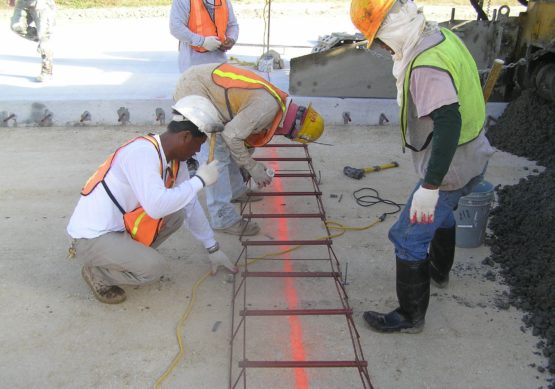Evaluation of Concrete Pavement Runway
The design and construction of an Air Force Base in Guam consisted of 10 lanes of concrete pavement runway approximately 12,600 long by 200 feet wide with overruns, ranging from 16 inches thick within the 80 feet center keel section to 12 inches thick at the outer lanes. CA’s investigation was comprised of determining the causes(s) of distress and evaluating the construction activities and repairs during the construction of the concrete pavement runway completed in 2007. The investigation included, among other things, the review and evaluation of specifications, drawings, photographs, construction reports, key construction activities, schedules, technical memorandums, expert reports, repair procedures, and relevant industry standards. Among the distress, deficiencies, and defects investigated due to the poor paving practices were problems such as, poor concrete consolidation, inadequate quality of the finished surface, failed repairs, rain damaged panels, and numerous spalls and surface defects, which represent a safety hazard due to the potential for foreign object debris damage to the aircrafts during the operation of the runway.
The design and construction of an Air Force Base in Guam consisted of 10 lanes of concrete pavement runway approximately 12,600 long by 200 feet wide with overruns, ranging from 16 inches thick within the 80 feet center keel section to 12 inches thick at the outer lanes. CA’s investigation was comprised of determining the causes(s) of distress and evaluating the construction activities and repairs during the construction of the concrete pavement runway completed in 2007. The investigation included, among other things, the review and evaluation of specifications, drawings, photographs, construction reports, key construction activities, schedules, technical memorandums, expert reports, repair procedures, and relevant industry standards. Among the distress, deficiencies, and defects investigated due to the poor paving practices were problems such as, poor concrete consolidation, inadequate quality of the finished surface, failed repairs, rain damaged panels, and numerous spalls and surface defects, which represent a safety hazard due to the potential for foreign object debris damage to the aircrafts during the operation of the runway.










